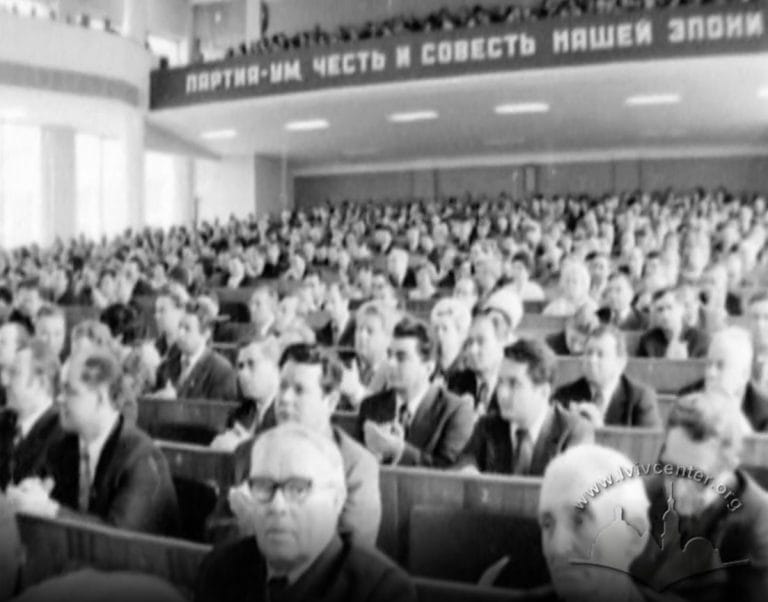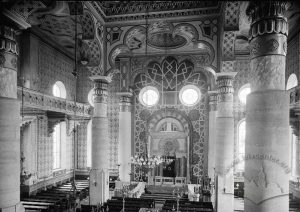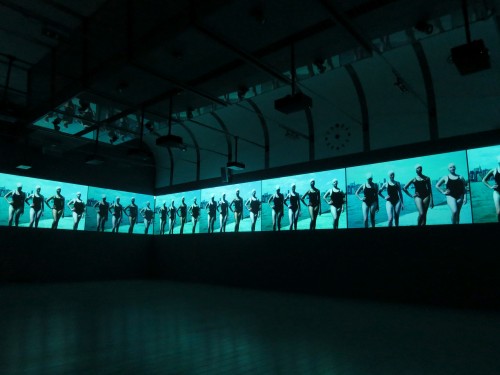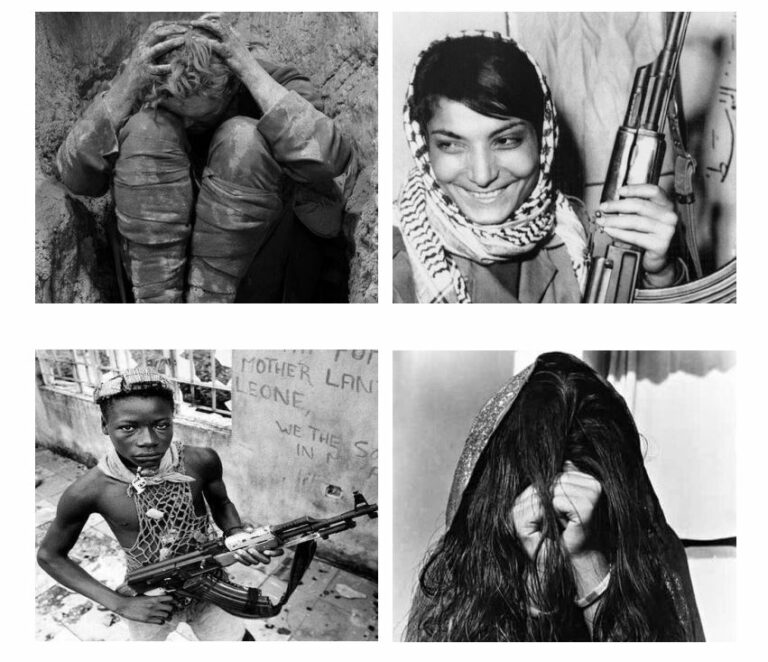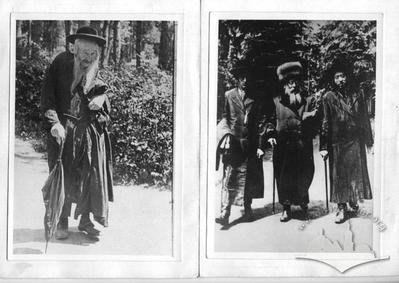1990s
Primary Sources

Declaration of State Sovereignty of Ukraine, 16 July 1990
The Declaration of State Sovereignty of Ukraine, adopted by the Verkhovna Rada of the Ukrainian SSR on 16 July 1990, was the key document that marked the beginning of Ukraine's path to independence. Its adoption took place in the context of the first pluralistic elections to the Verkhovna Rada of the Ukrainian SSR in March 1990 and the so-called "Parade of Sovereignties" during the late 1980s, a process in which the republics of the USSR proclaimed their autonomy against the backdrop of a weakened union center and Soviet censorship. The document, consisting of a preamble and ten articles, laid down the basic principles of the republic's autonomy policy, reflecting the desire to dismantle...

Excerpt from a 2012 interview with a female theater director: from Lviv to Moscow and back again
This is an excerpt from an interview with a theater director, one of the only women to work her way up through a male-dominated cultural sphere. She worked at several theaters in Lviv and became well-known in late Soviet and post-Soviet Ukraine. This source tells us about late Soviet theater, and the cultural world in general, and the different circulations and pathways between Lviv and Moscow. She mentions Khrushchev’s “Secret Speech” (actually at the 20th, not 22nd Party Congress) and the cultural opening that happened in the 1950s and 1960s. Note that she applied to theater school in Kyiv, but was not accepted - because she auditioned with verse by dissident poet Lina...

“Oh, in the meadow blooms the red viburnum,” a Ukrainian resistance song
This source is an audio recording of the folk version of the one of the most popular Ukrainian resistance songs. It is known by various titles: “The rifleman’s Anthem,” [Cтрілецький гімн] “The song of the viburnum,” [Пісня про калину] or “Oh, in the meadow blooms the red viburnum” [Ой у лузі червона калина]. The song’s worldwide spread was facilitated by the performance of Andriy Khlyvnyuk, the lead singer of the Boombox band, who on February 28, 2022, the fourth day of Russia’s full-scale attack on Ukraine, sang only the first stanza of the song. His performance on St. Sophia Square in Kyiv led to the emergence of remixes. Among the many performers are...
In addressing the causes of unlawful actions committed by high-ranking officials in the 1940s and 1960s, the authorities often attributed them to the lingering influence of pre-revolutionary capitalist mentalities among certain managers. This explanation lost credibility over time, as by the 1970s and 1980s, the leadership consisted largely of individuals born and fully socialized within the Soviet Union, supposedly free from the flaws of other, non-communist societies. In this module, Viktor Krupyna uses unpublished archival materials and available source collections to examine the widespread abuse of power by Soviet officials in the Ukrainian SSR in 1945-1991, its causes, scope, and consequences.
In the last decade, the Ukrainian parliament has issued two laws outlining the legal framework for dealing with the Russian imperial and Soviet past. These laws have sparked numerous scholarly debates on how to address the imperial past, Ukraine's status as part of the Romanov Empire and the Soviet Union, and what to do with the cultural products created over the centuries. This course aims to explore the Soviet legacy in present-day Ukraine and provide students with the necessary theoretical and methodological tools for studying, researching, and writing about Soviet history and culture. The implications for modern Ukrainian identity and politics, particularly in the context of the ongoing war with Russia, will be...
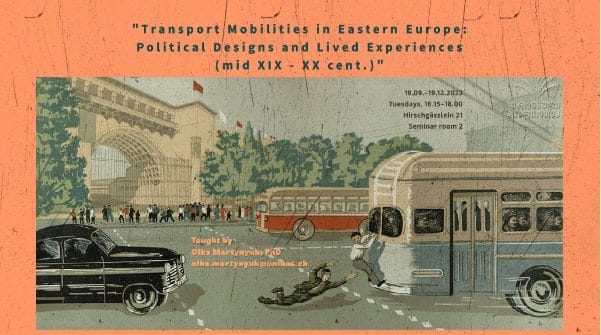 Transport Mobility in Eastern Europe: Political Designs and Lived Experiences (mid XIX – XX Century)
Transport Mobility in Eastern Europe: Political Designs and Lived Experiences (mid XIX – XX Century)
The course invites to explore East-European History of mid XIX - late XX cent. through the concept of mobility, which encompasses movement of people, goods and ideas. Students will deal with a corpus of texts on social history of transportation, as well as with a rich array of visual materials. Of special interest will be cases, specific to the region, for example cultures of Christian and Muslim pilgrimage, Socialist rallies, trolleybus infrastructures or “destalinization” of metro stations. Cases of imported western technologies will provide ground for interregional comparisons, not only in aspects of introduction of transport system, but also in aspects of their exploitation and disintegration. The course is built on a premise...
The course aims at a critical, in-depth exploration of how sexuality is intertwined with other epistemic categories and social differentials from a decolonial perspective and how the project of decolonization might look in the context of Ukraine. The course was created for Invisible University for Ukraine certificate program of the Central European University.
Russia’s war of aggression against Ukraine has prompted many to reconsider Ukraine’s relationship to the question of what it means to “decolonize.” This present-day revaluation of Ukraine’s complex imperial inheritances has centered primarily on Ukraine’s historical relationship to the Russian Empire (and the Russocentric Soviet Union), often to the exclusion of Ukraine’s Ottoman, Austro-Hungarian, and other imperial inheritances. This tragic moment of reflection raises a number of bedeviling questions. How do we narrate a decolonial history of Ukraine? Is it possible, or desirable, to disentangle Ukrainian culture from empires of the past and present? Can we imagine a future political and economic order for Ukraine that is not wholly dependent upon more powerful...
The course explores the history of Russia as an empire from Peter I up to now in the methodological perspective of the new imperial history. What are the historical preconditions and sources of Russian imperialism and militarism? How did the small principality of North-Eastern Europe manage to create the largest empire in the world? To what extent the Russian Empire of the 18th and 19th centuries differed from European colonial empires as well as eastern imperial polities such as Ottoman Empire and China? How did the imperial nationalities policies emerge and evolve? What role did the competition between "great powers" play in turning Russia into an empire? The course attempts to answer these...
The field of social history has achieved the edge of its popularity in 1950-1980s. It was strongly connected with other disciplines, such as economics, demography, sociology, and allowed historians to reach a much wider range of research themes. Since the 1960s, the social history of the Jewish people became important and influential part of the studies. Historians were exploring the possibilities to study Jewish community with new tools and integrating different representatives of Jewish community – workers, women, immigrants, criminals - in a research. Since 1990s historians of Jewish past shifted their interest to cultural studies. However, in the last years, we can see an economic turn, which signifies the search for a...
The aim of the course is to get to know how to analyze examples of visual culture, including: fiction films and documentaries, video, photography. Both contemporary and historical materials will be studied, together with theoretical texts and publications (from the area of film and media studies, anthropology, cultural studies and history. Although images are mostly seen, if you want to really know them and understand them really well, you must not only "see" them but also "read" them, that means to analyze them as a complex message/ text. That is why at our course we will firstly discuss some terms and categories, that would help us to read images such as: composition, convention,...
The course aims to discuss the major military conflicts of the twentieth century from a gender perspective. In doing so, the course covers the history of global and local wars in a wide variety of regions, including Europe, Africa, and Asia. However, rather than surveying a vast number of military conflicts, we will use a case study approach to conduct in-depth analyses of external and internal dynamics of military encounters and the role of gendered violence during them.
In our mini-course we will explore cultural interaction between Jews and non-Jews (Ukrainians, Poles, Russians) in the borderlands of the Habsburg and Romanov empires. This is interaction that may have been conscious or unconscious, and may have involved encounter, appropriation, negotiation, exchange and destruction.
This seminar explores ideas and practices of heritage in Eastern and Central Europe between 1945 and now. The course is designed as a set of five meetings, which will include short lecture introductions, seminar discussions, and at the end – practical workshop. Our meetings will be about discussing the texts, addressing cases you will read about or already know. Thіs the seminar will be our common effort in reading, asking questions and searching for answers. Therefore it is crucial that you will read assigned parts of selected texts and also consult texts from the recommended reading list. While reading assigned texts, please keep a short track of your ideas and formulate several questions...
Ukraine’s twentieth century was tragically marked by much politically motivated violence and authoritarian regimes as well as movements, from the radical left and the radical right. These forces and events did not only do great harm in the past but left memories and legacies that are still challenging to contemporary Ukraine. In this class, we will focus on several key issues of history, memory, and politics. The readings cannot be exhaustive. Instead, our aim is to read and discuss a sample of important short texts that allow us to reflect more broadly on the underlying questions.
This course forms a part of Jewish History, Multiethnic Past, and Common Heritage: Urban Experience in Eastern Europe summer school.
The course will cover the major development of the East European Jewry from the mid-eighteenth century till the present. More specifically, it will focus on the apparently largest category of modern Jewish history, i.e. modernity itself. The course will start with the discussion of what modernity means in contemporary scholarly discourse, and—more specifically—how it is applied today in historiography of East European Jewry. This introduction will provide a frame for the focus of the course: the analysis of the changing life patters and differing strategies of adopting, rejecting, or negotiating modernity in every-day lives of East European Jews.

